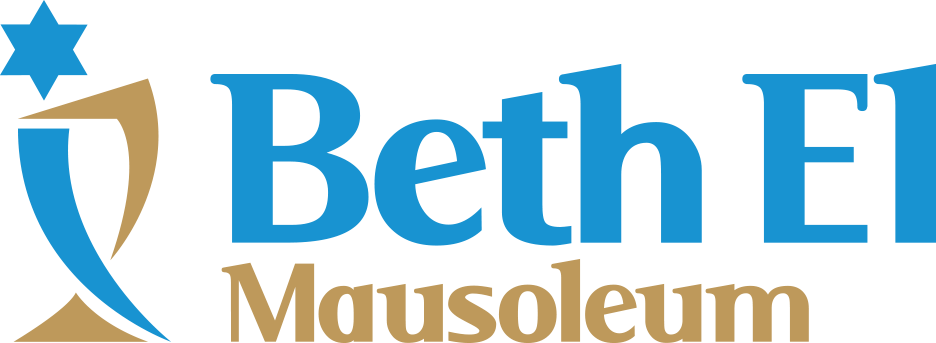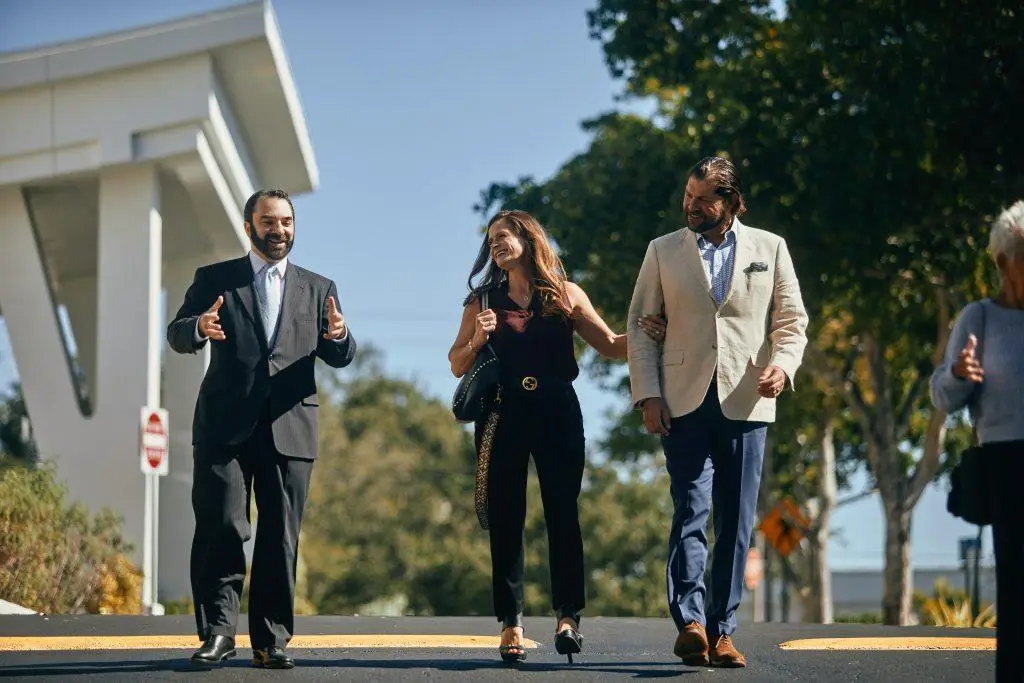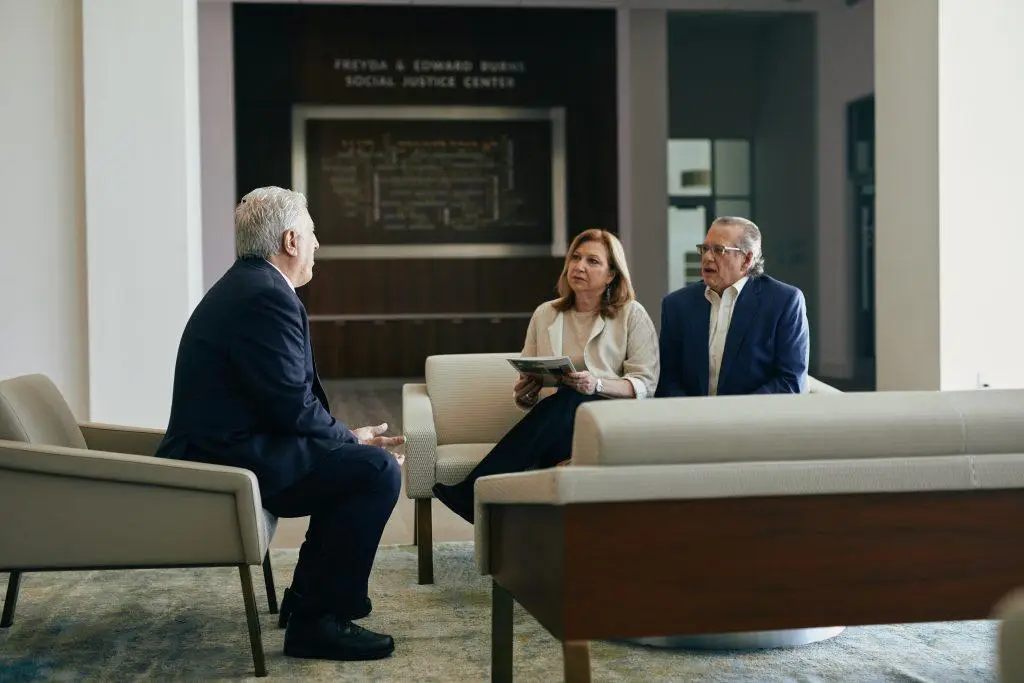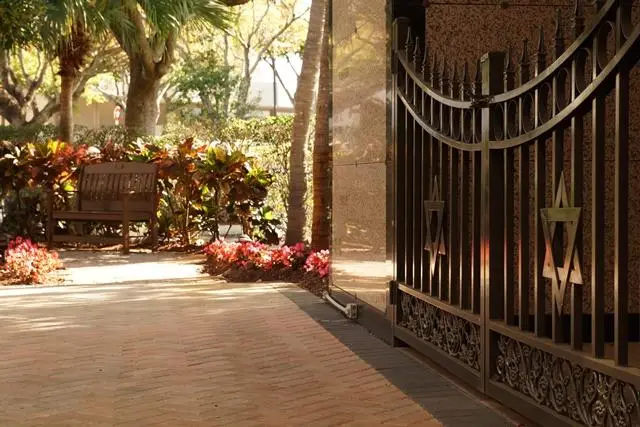Jewish Traditions
Learn About Jewish Traditions and Funerals
The funeral service consists of two parts: words spoken in honor of the deceased, and the entombment service. It is a customary Jewish Traditions that at a Jewish funeral to read passages from the Bible and other meaningful readings, which seek to honor the person who has died. These passages are also meant to offer consolation to those who survive.
The most important part of a funeral service is the eulogies offered in honor and memory of the deceased. A eulogy may be offered by the person officiating at the service and may also be offered by loved ones who knew the person well. There is no obligation for family members to offer a eulogy, however many find the process of composing and offering thoughts and remembrances to be healing and cathartic.
The service concludes with the chanting of the prayer, El Maley Rachamim, which speaks of God’s compassion, and prayers for the deceased to be comforted and to rest in peace.
Mourning Period (Shiva)
It is the responsibility of the community to visit and provide for the mourners during their period of mourning. Some choose to bring food to the mourner’s home. Others make donations in memory of the person who has died. One of the Jewish traditions dictates that rather than sending flowers, individuals are encouraged to make charitable contributions.
Remember that by being there, you are a source of comfort. Therefore, your words are not as important as your presence. Jewish traditions recognize that there are few things that a person can say to assuage another person’s grief. With that in mind, Judaism explains that the visitor should remain silent and wait for the mourner to speak first. You may then offer a few words of sympathy or give the mourner a hug or squeeze of the hand as a sign of support. A simple expression of “I love you” may be much more valuable than trying to philosophize.
Once mourners depart the funeral service, they begin the formal mourning period known as Shiva. For either three or seven days, including the day of the funeral, this is a time to reflect and grieve with the support of family and friends.
Meal of Condolence or Consolation
After the funeral the mourners traditionally eat a meal provided by friends and neighbors. This meal includes hard-boiled eggs or other round foods, like a bagel or challah that symbolize that the cycle of life must continue. As an alternative, many Beth El Mausoleum owners choose to hold their Meal of Condolence immediately following funeral services, in one of the Temple’s banquet rooms. This takes the burden away from the grieving family who can then use their home as a respite rather than as a place to entertain guests. A Temple Beth El event planner is able to make this a seamless process.

Meal Of Condolence Or Consolation
After the funeral the mourners traditionally eat a meal provided by friends and neighbors. This meal includes hard-boiled eggs or other round foods, like a bagel or challah that symbolize that the cycle of life must continue. As an alternative, many Beth El Mausoleum owners choose to hold their Meal of Condolence immediately following funeral services, in one of the Temple’s banquet rooms. This takes the burden away from the grieving family who can then use their home as a respite rather than as a place to entertain guests. A Temple Beth El event planner is able to make this a seamless process.
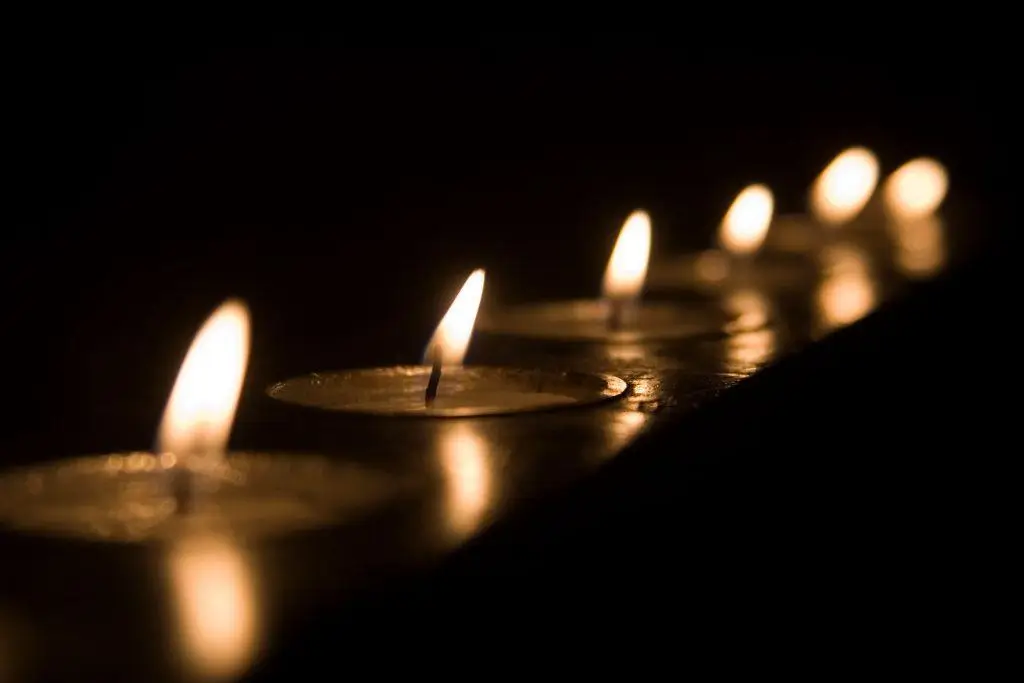
Yahrzeit
Yahrzeit is the observance of the anniversary of the date of death. Many light a special yahrzeit candle, which burns for a full twenty-four hours starting at sundown the night before the observance of your loved ones death. At Shabbat services following the yahrzeit, the names of loved ones of Temple Beth El members will be read in their honor prior to the reading of Kaddish. If you are not a member of Temple Beth El, or are not familiar with Jewish Traditions, you may call the rabbi’s office to request the name of your loved one to be recited at the Shabbat service closest to their annual Yahrzeit date.
For information on honoring a loved one on our Yahrzeit Wall, please contact the Mausoleum Office at 561-391-8901.
Yahrzeit
Yahrzeit is the observance of the anniversary of the date of death. Many light a special yahrzeit candle, which burns for a full twenty-four hours starting at sundown the night before the observance of your loved ones death. At Shabbat services following the yahrzeit, the names of loved ones of Temple Beth El members will be read in their honor prior to the reading of Kaddish. If you are not a member of Temple Beth El, you may call the rabbi’s office to request the name of your loved one to be recited at the Shabbat service closest to their annual Yahrzeit date.
For information on honoring a loved one on our Yahrzeit Wall, please contact the Mausoleum Office at 561-391-8901.
Yizkor
Yizkor is a synagogue memorial service that is held four times a year – Yom Kippur, Shemini Atzeret (after Sukkot), Passover, and Shavuot – in which we remember our loved ones, no matter how long ago the person died. This affords us an opportunity to sustain the bond we have shared with the loved ones whom we have lost. You may choose to light a memorial candle in your home or in the synagogue.
Yizkor
Yizkor is a synagogue memorial service that is held four times a year – Yom Kippur, Shemini Atzeret (after Sukkot), Passover, and Shavuot – in which we remember our loved ones, no matter how long ago the person died. This affords us an opportunity to sustain the bond we have shared with the loved ones whom we have lost. You may choose to light a memorial candle in your home or in the synagogue.
Unveiling
Any time after the period of shloshim (30 days) the family may contact the Mausoleum Director regarding the inscription. An inscription is chosen by the family, and once approved, is placed on the crypt or niche, and a ritual called an unveiling takes place. The unveiling literally was the unveiling of the stone, and is a time for family and friends to gather to remember their loved one after a period of mourning. The unveiling may be held any time after the first thirty days, and before or at the occasion of the first yahrzeit.

Unveiling
Any time after the period of shloshim (30 days) the family may contact the Mausoleum Director regarding the inscription. An inscription is chosen by the family, and once approved, is placed on the crypt or niche, and a ritual called an unveiling takes place. The unveiling literally was the unveiling of the stone, and is a time for family and friends to gather to remember their loved one after a period of mourning. The unveiling may be held any time after the first thirty days, and before or at the occasion of the first yahrzeit.

Visiting The Sick - Bikkur Cholim
In the Talmud, it says that one who visits the sick eliminates one-sixtieth of their pain. Therefore, visiting the sick is an important value at Temple Beth El. The clergy are available to offer support and make regular visits to members of the Temple Beth El congregation and their loved ones who are hospitalized. When the hospital asks for religious and synagogue affiliation during registration, let them know if you are a member of Temple Beth El.
Temple Beth El also has a Bikkur Cholim group made up of caring individuals who make calls and visit fellow congregants in the hospital, nursing homes, rehabilitation facilities, the homebound, and those with hospice care.
Visiting The Sick - Bikkur Cholim
In the Talmud, it says that one who visits the sick eliminates one-sixtieth of their pain. Therefore, visiting the sick is an important value at Temple Beth El. The clergy are available to offer support and make regular visits to members of the Temple Beth El congregation and their loved ones who are hospitalized. When the hospital asks for religious and synagogue affiliation during registration, let them know if you are a member of Temple Beth El.
Temple Beth El also has a Bikkur Cholim group made up of caring individuals who make calls and visit fellow congregants in the hospital, nursing homes, rehabilitation facilities, the homebound, and those with hospice care.
Rending a Garment (Kriya)
When a death occurs, Jewish law teaches that a garment be torn as a sign of mourning. This ritual is referred to as kriya, which literally means “tearing,” and is representative of the tear in our hearts, and as an outward symbol of grief and pain. Kriya normally takes place immediately before the funeral service begins. Siblings, parents, and spouses tear over the right side, and children tear over the left side as a symbol of the special love shared by a child toward a parent. For those who wish, a black ribbon may be attached to one’s shirt and torn in lieu of the garment.
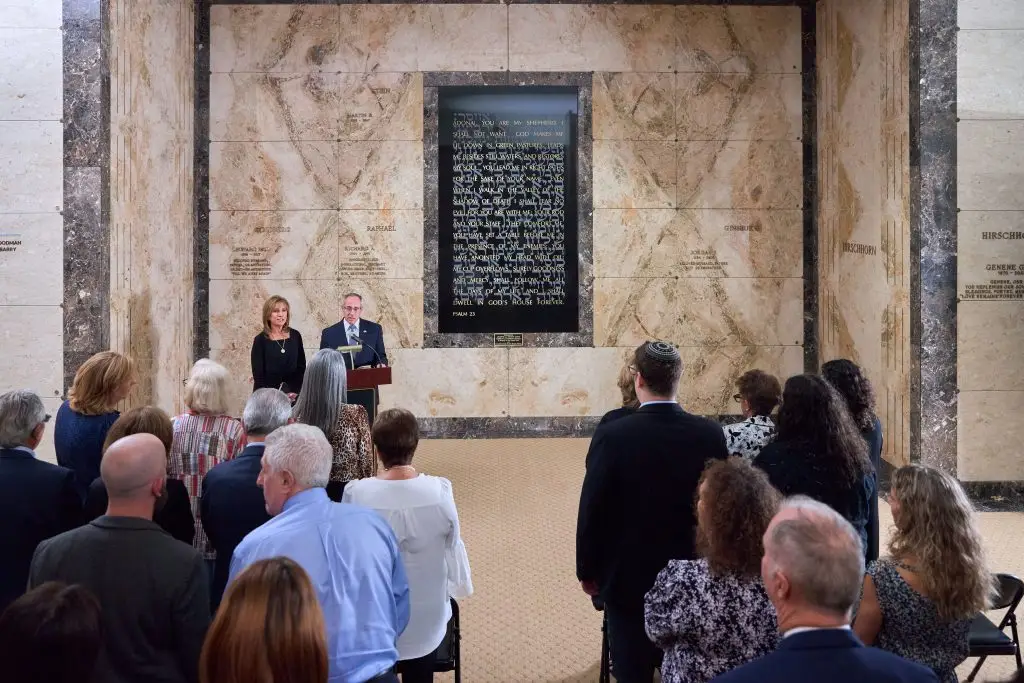
Rending A Garment (Kriya)
When a death occurs, Jewish law teaches that a garment be torn as a sign of mourning. This ritual is referred to as kriya, which literally means “tearing,” and is representative of the tear in our hearts, and as an outward symbol of grief and pain. Kriya normally takes place immediately before the funeral service begins. Siblings, parents, and spouses tear over the right side, and children tear over the left side as a symbol of the special love shared by a child toward a parent. For those who wish, a black ribbon may be attached to one’s shirt and torn in lieu of the garment.
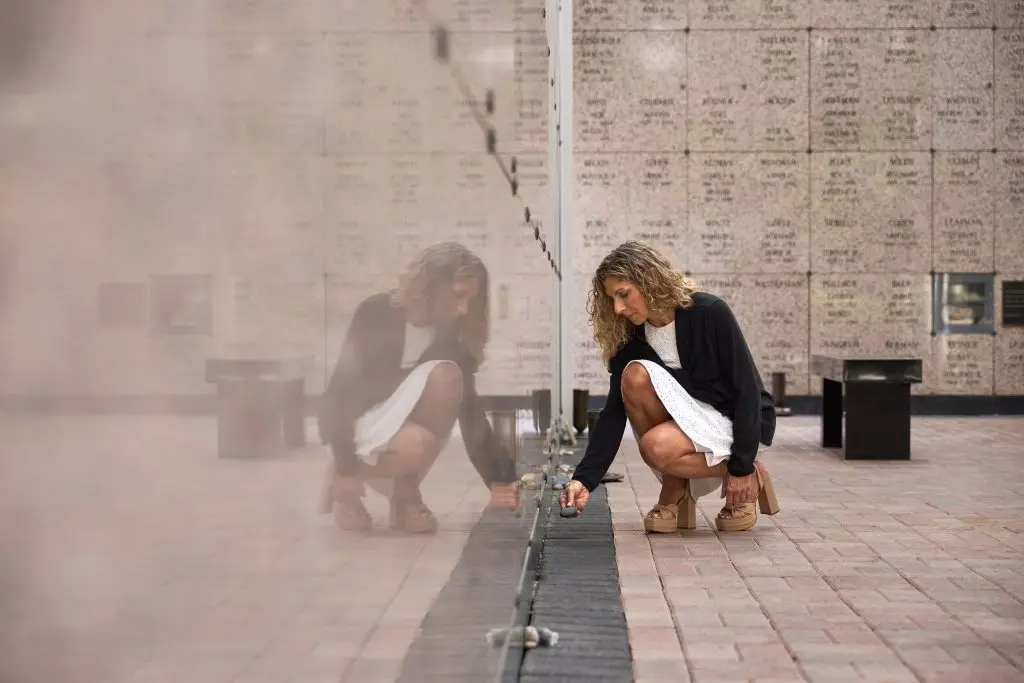
Placing A Stone
Flowers are not considered a part of Jewish traditions. This relates to the idea that a Jew should be buried in a simple manner. Instead, it is customary to lay stones at the crypt or niche as an act of remembrance or respect. Many also choose to make a charitable contribution in your loved one’s honor or memory.
Placing A Stone
Flowers are not considered a part of Jewish traditions. This relates to the idea that a Jew should be buried in a simple manner. Instead, it is customary to lay stones at the crypt or niche as an act of remembrance or respect. Many also choose to make a charitable contribution in your loved one’s honor or memory.
Cremation
Reform Judaism respects an individual’s right to make the choices that are most appropriate for him/her, and that includes cremation. Judaism teaches…“From dust we are formed, and to dust we will return.”
While some choose to have the ashes scattered in a place of particular meaning to the family, many choose to place the remains in a niche in a mausoleum along with a memorial service as part of the funeral arrangements.
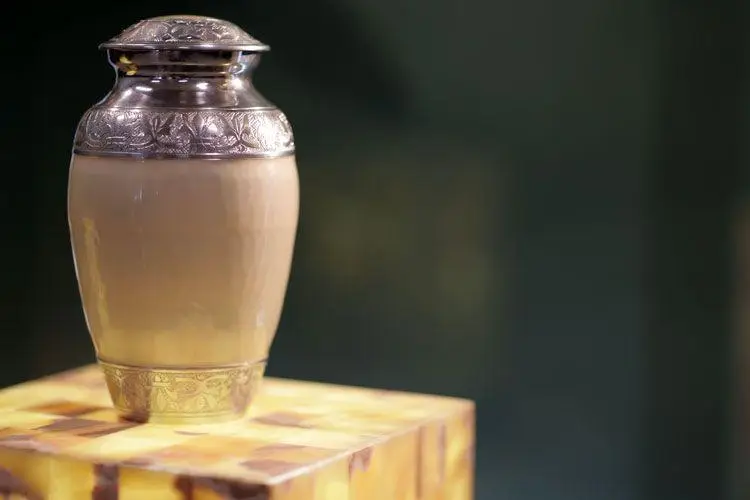
Cremation
Reform Judaism respects an individual’s right to make the choices that are most appropriate for him/her, and that includes cremation. Judaism teaches…“From dust we are formed, and to dust we will return.”
While some choose to have the ashes scattered in a place of particular meaning to the family, many choose to place the remains in a niche in a mausoleum along with a memorial service as part of the funeral arrangements.
